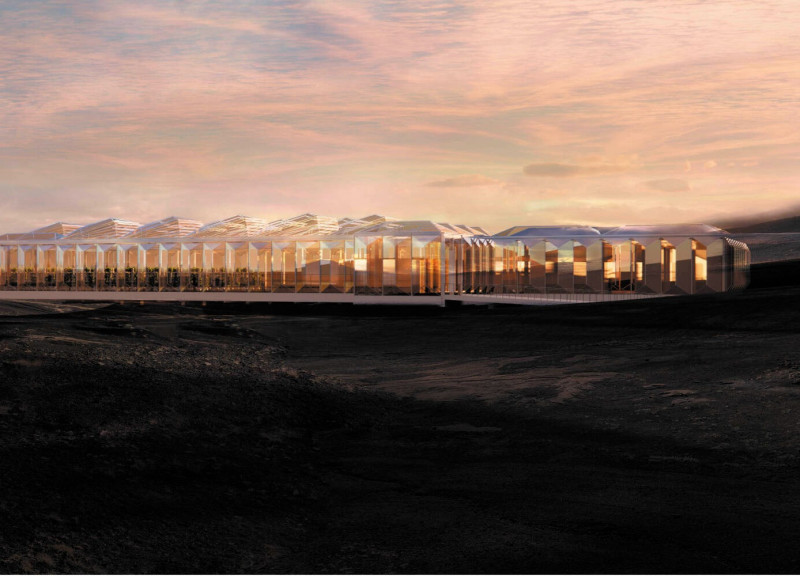5 key facts about this project
The project presents an architectural design for a greenhouse restaurant situated in an environmentally sensitive landscape, characterized by its integration of agricultural practices and dining experiences. This architecture serves a dual function as both a culinary establishment and an educational facility, promoting sustainable living and community engagement. The design emphasizes transparency in food production, aligning dining with agriculture, while facilitating education around ecological practices and sustainable food systems.
Innovative Design Approach to Sustainability
A defining characteristic of this project is its emphasis on sustainable practices across all aspects of construction and operation. The structure utilizes tempered insulated glass panels to maximize natural light, reducing the need for artificial lighting. Cross-laminated timber is incorporated as a primary structural element, offering strength while minimizing carbon footprint. The use of an ETFE membrane enhances the greenhouse's thermal performance, ensuring an efficient growing environment.
The architectural design includes features such as a green roof system, which captures rainwater and reduces runoff, while providing insulation and a habitat for local biodiversity. Additionally, the layout encourages flexibility, allowing the interior space to be reconfigured for various activities, including dining and educational workshops.
Functional Zones Enhancing the User Experience
The organization of the interior space is central to its functionality. The project is divided into distinct zones, each designed for specific purposes. The dining area is characterized by communal tables, fostering interaction among visitors and enhancing the sense of community. Adjacent, educational zones are dedicated to workshops and demonstrations, allowing guests to engage with sustainable practices hands-on.
Production areas within the greenhouse are designed to be visible to diners, reinforcing transparency in food sourcing. This setup facilitates an understanding of the plant growth cycle and emphasizes the importance of local sourcing in the culinary experience.
Overall, this greenhouse restaurant project stands out for its commitment to sustainability through innovative architectural design. It not only serves as a place for nourishment but also as a model for future projects aiming to integrate food production with dining. To gain a deeper understanding of the architectural plans, sections, and design ideas, exploring the project presentation is recommended for further insights.






















































